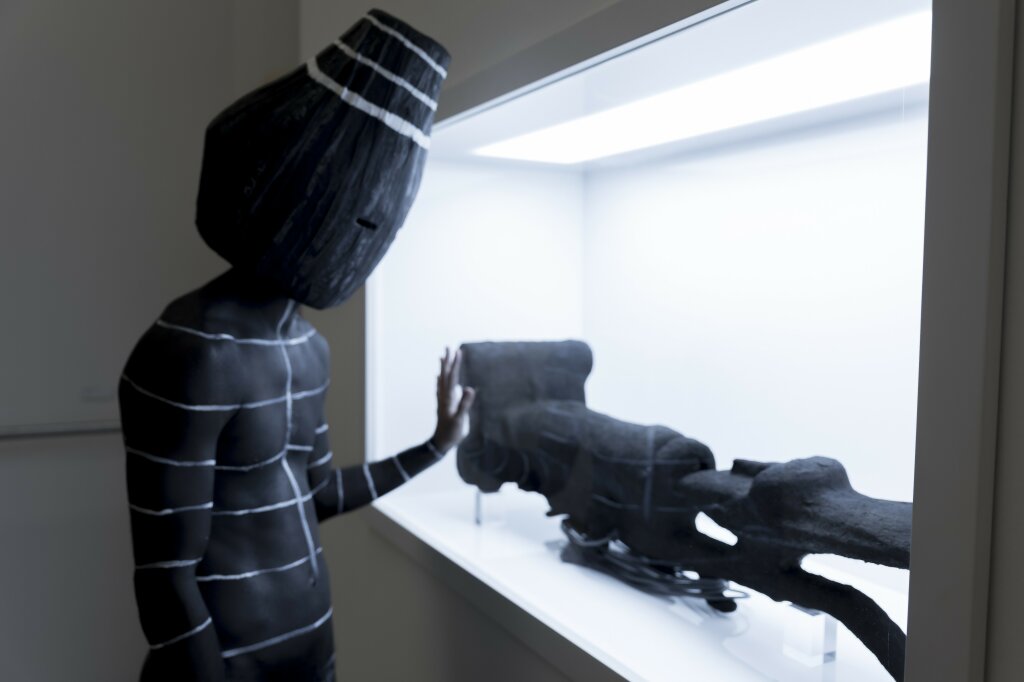Stripping the Force
Solo Exhibition at Kunsthalle Bremen
Kunstpreis der Böttcherstraße [Art Award of the Böttcher Street]
27 July – 30 November 2018
Stripping the Force
Stripping the Force consists of two parts, separated from each other by a wall. Formally, these parts are quite distinct from each other, but in terms of their themes and motives they are closely connected. The frontal part of the exhibition is set in a simple, ethnographic style and deals with an ancient, presumably extinct civilisation: the Himmelheber [Sky-Bearers]. As Müller explains in conversation, the Himmelheber have already been extinct and revived a number of times. Among their characteristics are a voluntary death by choice (always in autumn and at a river, always chaperoned by a companion, Tarung) and a hermaphrodite priesthood that is meant to connect to the Dram, the “In-Between”, where the Gods and ancestors are located, a realm between life and death.
The people of the Himmelheber have bequeathed objects of peculiar beauty, some of which are shown in the frontal part of the exhibition—accompanied by a wall text and an audio guide. The objects are fully coated with a coarse, dark paste that consists of blood, bone meal, hair, urine and sperm (materials that are derived—and secreted—from the vulnerable, “open” body). Presumably, the paste had a ritual function and was (or still is) used by priests during religious acts. Aside from these relics, the first part is dedicated to some exemplary rites of the Himmelheber, which the audio guide (also a work of Müller’s) explains. How and when do we die? How will we be remembered? Who will accompany us through the act of dying? Which shape does our life take? The Himmelheber offer extraordinary answers to some questions that human beings have been dealing with for millennia.
The second part of the exhibition, in the rear end of the space, is a kind of “remix” of the first part and contains an exuberant contemporary flood of images. Several display stands, costumes and other items of clothing are on view in front of a purple-coloured wallpaper—mixed in with films, drawings, texts, prints, collages and objects. On several screens one can see the rehearsal for the two-and-a-half-hour long performance Praxis, Probe und Produktion von Wirkungen und Wirklichkeiten [Praxis, Rehearsal, and Production of Effects and Realities] that takes place within the space on the evening of the opening, employing some of the works of the exhibition in a performative way (a remote-controlled animal, a relic of the Himmelheber, among other things). The exhibition presents a diversity and pushes this diversity to the extreme, it quotes from clichés and develops—in an eccentric, hybrid fashion—mutations and metastases. The “topic” of the exhibition (the people of the Himmelheber) is varied, fractured and fanned out—like a ray of light that is broken into a kaleidoscopic range of colours in a rainy sky. The possible and the real are progressively rendered indistinguishable. What is one’s own converges with the foreign other. And the longing for distant places is turned back onto itself. The works might appear to be ironic, associative and strangely uninhibited. But ultimately, it turns out, they are one thing above all: deeply human.






























